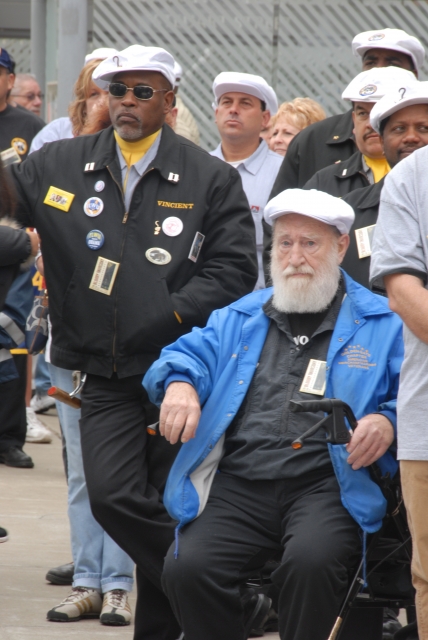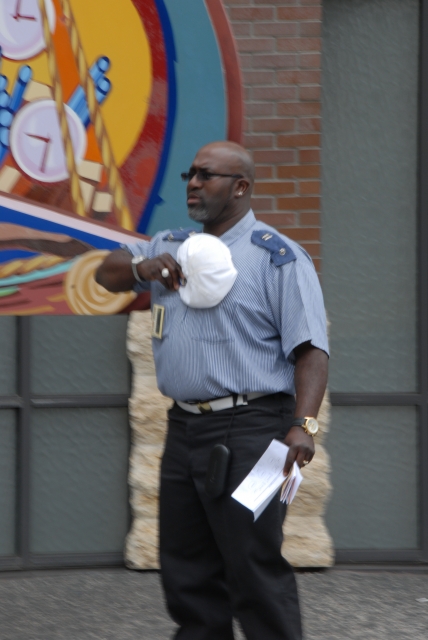From the Open-Publishing Calendar
From the Open-Publishing Newswire
Indybay Feature
The 75th Anniversary of "Bloody Thursday" and The San Francisco General Strike.
People gathered at Harry Bridges Plaza in the Embarcadero to remember the day, July 5, 1934, when two strikers were gunned down and killed by police. Several hundred union members and their supporters, many from around the world, marched in a reenacted funeral procession of the fallen men, Howard Sperry and Nick Bordoise. As the procession passed the memorial at Mission and Steuart Streets, across the street from the site of the deaths, they took off their hats.

July 6, 2009 marked the 75th anniversary of an important day in American labor history, the day two strikers were killed by police, shot in the back, a day known as ‘bloody Thursday.” On July 9, 1934 a funeral was held for the two slain workers, Howard Sperry and Nick Bordoise, their coffins borne on flat bed trucks, led a solemn procession of over forty thousand people up Market Street. This violence against striking workers was the breaking point in a long series waterfront clashes. The subsequent general strike, shut down San Francisco, and crippled the west coast for days. The result was the creation of the International Longshore and Warehouse Union, ILWU, covering the entire west coast. The workers got their union run hiring hall, no more corrupt “shape up,” and workers in general benefited by the example set by the striking dock workers. Workers now had the confidence to join and form unions, and engage in collective bargaining. Catherine Powell, director of the Labor Archives and Research Center at San Francisco State University, called this; “A pivotal event in San Francisco and American Labor history, important in part because it came before the Wagner Act, granting the right to collective bargaining.”
For further reading; The Big Strike, Mike Quin, International Publishers. 1991.
A Terrible Anger: The 1934 Waterfront And General Strikes in San Francisco, David Selvin, Wayne State University, 1996
For further reading; The Big Strike, Mike Quin, International Publishers. 1991.
A Terrible Anger: The 1934 Waterfront And General Strikes in San Francisco, David Selvin, Wayne State University, 1996
For more information:
http://laborfest.org
Add Your Comments
Latest Comments
Listed below are the latest comments about this post.
These comments are submitted anonymously by website visitors.
TITLE
AUTHOR
DATE
CORRECTION
Tue, Jul 7, 2009 9:41AM
correction
Tue, Jul 7, 2009 8:49AM
We are 100% volunteer and depend on your participation to sustain our efforts!
Get Involved
If you'd like to help with maintaining or developing the website, contact us.
Publish
Publish your stories and upcoming events on Indybay.
Topics
More
Search Indybay's Archives
Advanced Search
►
▼
IMC Network














